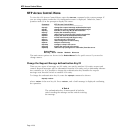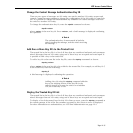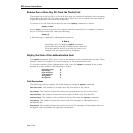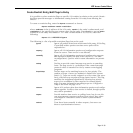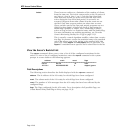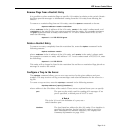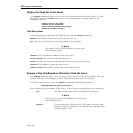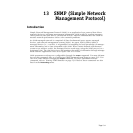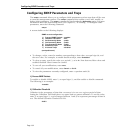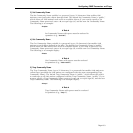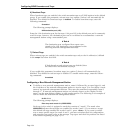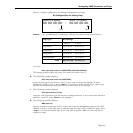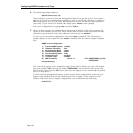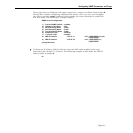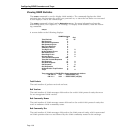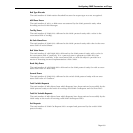
Configuring SNMP Parameters and Traps
Page 13-2
Configuring SNMP Parameters and Traps
The snmpc command allows you to configure SNMP parameters and set traps that will be sent
to network management stations. The snmpc command also enables you to add, modify, or
delete SNMP parameters. The snmpc command is listed under the Networking menu. For more
information about the networking menu, see Chapter 25, “IP Routing.” To configure SNMP
parameters, enter the following command:
snmpc
A screen similar to the following displays:
SNMP current configuration:
1) Process SNMP Packets - enabled
2) Utilization Threshold - 60%
3) Set Community Name - public
4) Get Community Name - public
5) Trap Community Name - public
6) Broadcast Traps - disabled
7) 0 Unicast Traps - disabled
(save/quit/cancel)
:
• To change a value, enter the number corresponding to that value, an equal sign (=), and
the new value. For example, to enable broadcast traps, enter 5=enabled.
• To clear an entry, specify the value as a period (.), as in 2=. Note that true/false values and
enabled/disabled values cannot be cleared.
• To save all your modifications, enter
save.
• To cancel all your modifications, enter
Cancel or Ctrl-C .
• To view the parameters currently configured, enter a question mark (?).
1) Process SNMP Packets
To enable or disable SNMP, enter 1, an equal sign (=), and the enable or disable command.
The following is an example:
1=enable
2) Utilization Threshold
Utilization is the percentage of time that a resource is in use over a given period of time.
Setting the Utilization Threshold places an upper limit on system utilization. To set this value,
enter 2, an equal sign (=), and an integer between 1 and 99 to represent percentage of time in
use. The default Utilization Threshold is 60%.
2=60%



